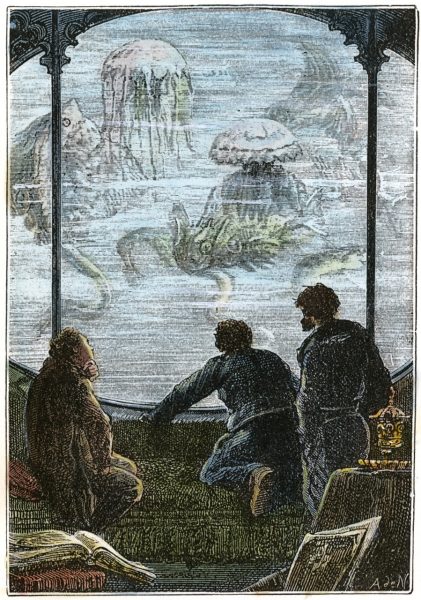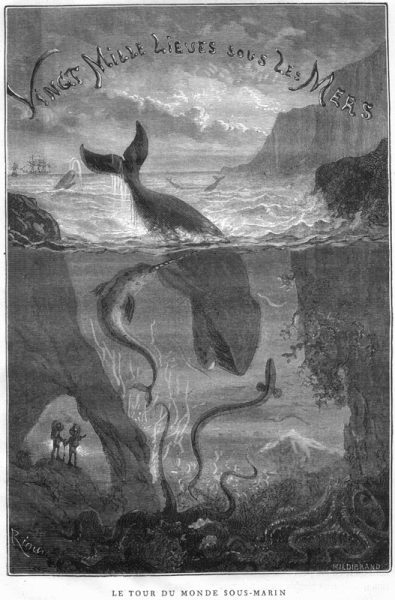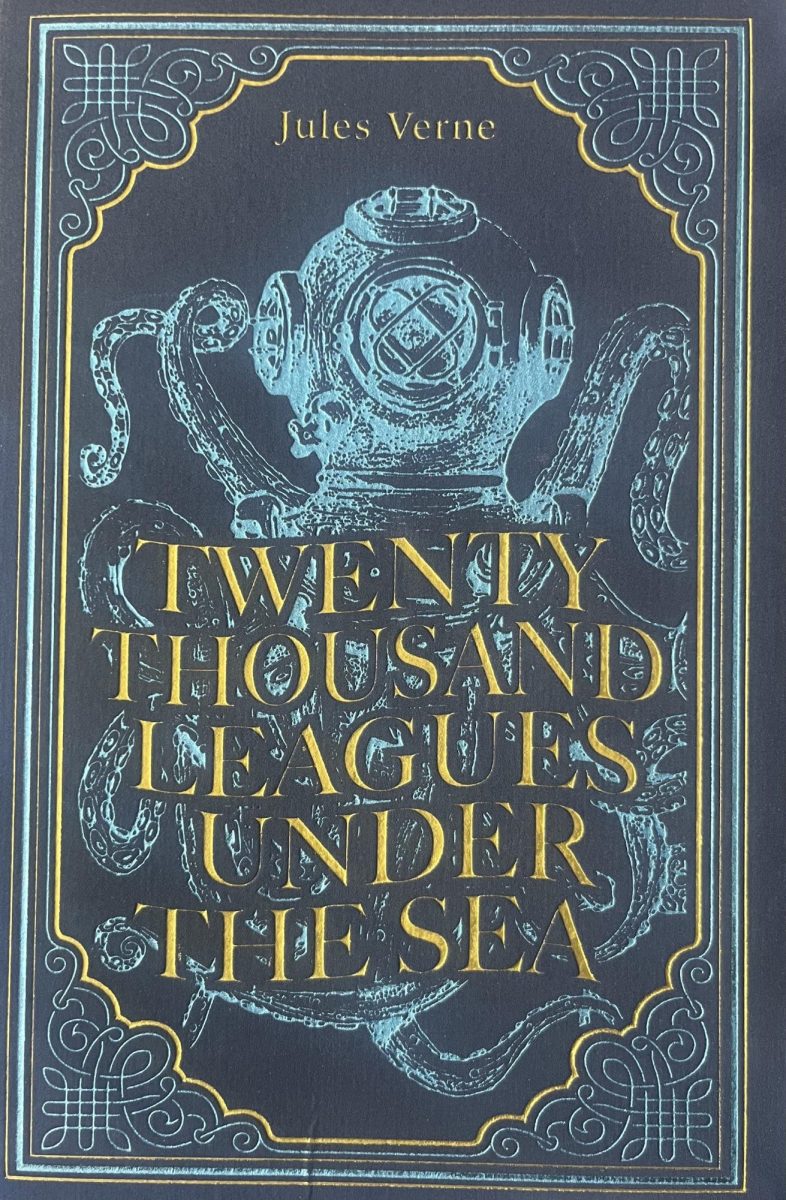Two years ago, shortly after I graduated high school and started going to Brookdale full time, I decided I wanted to start reading again. Back in middle school, I used to read a lot, especially high fantasy novels and series. But right around the start of high school and the Covid-19 pandemic, I stopped (giving up on a hobby during the lockdowns is a guilt that many ironically have, including myself, and maybe you).
So when I decided to start reading again, I visited a bookstore in Manhattan and searched around for something that might look interesting. To be honest, I judged the books by their cover, skimming over shelves with three dozen books in less than a minute at a time.
It wasn’t long before I found a small table with a sign that read “Sci Fi Classics.” On top of the stack of books on the table was a handful of thick blue ones. The cover was an illustration of an octopus with its head replaced with the antique helmet of a scuba diver. The title read, “Twenty Thousand Leagues Under The Sea.”
It looked nice, and it was cheap, so I got it and read the first two chapters on the train ride back into New Jersey. I almost instantly loved it, so I decided to look up the book and it’s author.
“Twenty Thousand Leagues Under The Sea” (TTLUTS for short, I’m not going to write out the full name for the next two dozen times I’ll need to) was released in full in 1871 by Jules G. Vernes (1828-1905). Vernes was a French author who is credited for helping establish modern science fiction. Along with TTLUTS, he also wrote “Around The World In Eighty Days,” “From The Earth To The Moon,” and “Journey To The Centre Of The Earth.”
In short, Vernes is the author to go to for classic Sci-Fi. What really makes stories like TTLUTS so amazing is that Vernes is describing super advanced technology from the perspective of someone living in 1860s France.
TTLUTS follows Professor Aronnax and two companions of his who are a part of a crew shipped out to sea to investigate a hostile leviathan that is attacking ships. The empires ruling over Europe and America were terrified of this creature, and the slim possibility that the creature may have instead been a manmade warship.
The Professor and his companions found out the dark truth when their ship was attacked and they fell overboard, ending up in a futurist submarine.

This is when they are introduced to the brilliant leader of the Nautilus, Captain Nemo. Captain Nemo tells the three that he doesn’t plan to kill them, informing them that they are now eternally prisoners of the Nautilus since its existence can’t be fully known by the world.
TTLUTS is as much about Captain Nemo’s tragic character as it is an adventure story in the deep blue sea just as the first real explorations of the sea floor were taking place. Professor Aronnax is constantly amazed by everything Captain Nemo has to show him about the Nautilus. The captain built the vessel years ago in absolute secrecy to the world so that he could escape the shore with all his personal treasure, books and his limited crew.
There are entire chapters where nothing is said between characters, it’s just professor describing the mechanical workings of the Nautilus and the sea floor outings that the three stowaways are invited on. Pages and pages dedicated to explaining how the ventilation system works, how the crew gets food, and what happens when a crew member passes away. It is a captivatingly detailed novel that is the upmost challenge for those with a short attention span.

But as the five-hundred-page classic gets closer to the end, a greater focus is put on Captain Nemo. Despite his kindness to Professor Aronnax when he was first brought on the Nautilus, he increasingly becomes more drawn away until the Professor goes weeks within seeing him.
Captain Nemo’s backstory is never explained, but there are a few details. He was obviously very rich in his past life, holds a hatred for world governments that the Professor theorized was personal, and has an interest in every intellectual subject. The Professor believed that he had a family at one point, and that his hatred for governments had something to do with their disappearance.
To not spoil the end much, Professor Aronnax eventually agrees with his two companions that they need to escape. They shortly get the opportunity when Captain Nemo enters into a naval battle with ships off the coast of Norway. How the Professor escapes and the fate of Captain Nemo is up to you – potential reader after this article – to find out.

TTLUTS is an amazing novel. It has the charm that classical works of literature carry, but at the same time it was one of the first modern Sci-Fi books. It’s like no other novel in its writing, making it a fool’s errand to try to find another like it.
That is why I will be rereading “Twenty Thousand Leagues Under The Sea.” The copy that I have published by the Paper Mill Press is just north of 500 pages, so it will be a grueling reread. Nonetheless, it should be all the worthwhile, just as it was when I first read it.



























